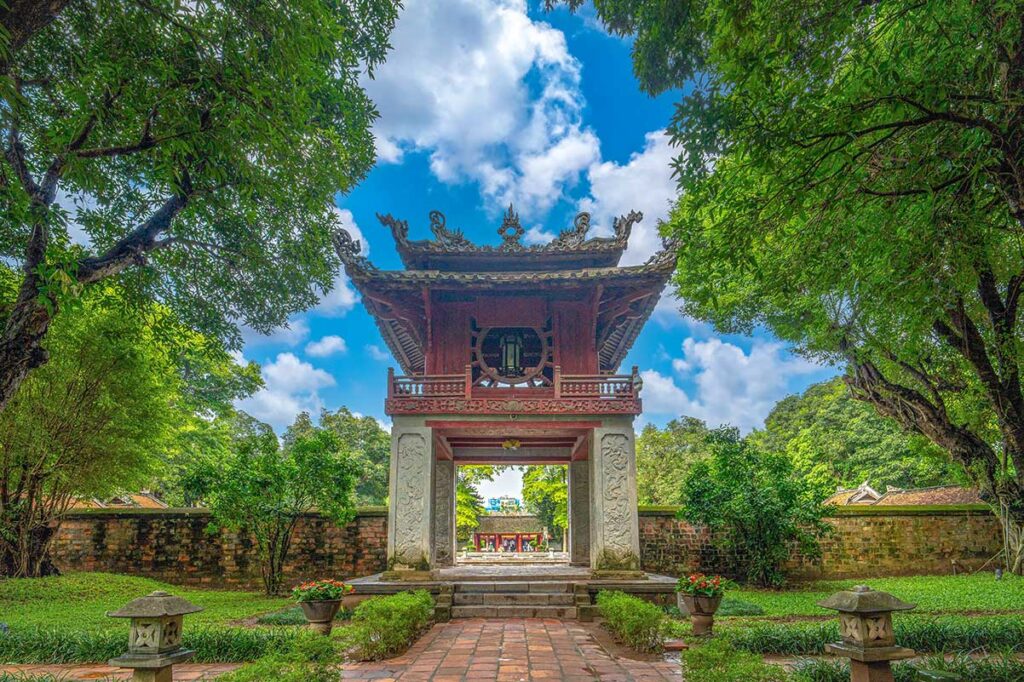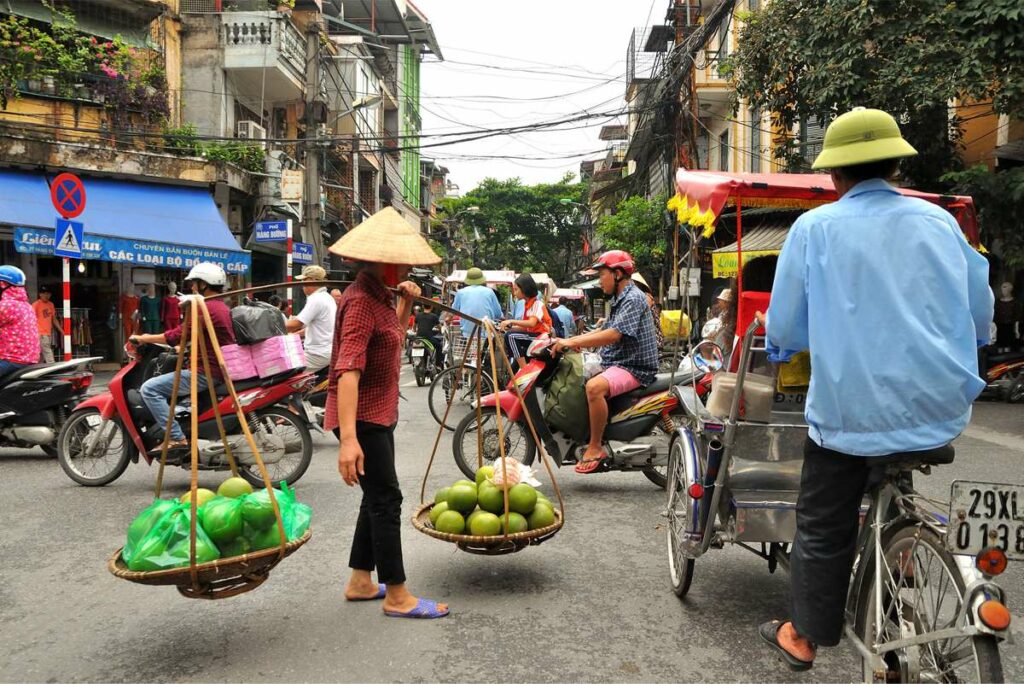Khue Van Pavilion: Symbol of Hanoi
Khue Van Pavilion, or Khuê Văn Các, is a small yet iconic structure located in the second courtyard of the Temple of Literature in Hanoi. Built in 1805, it later became the official symbol of the capital in 1997, chosen to represent Hanoi’s cultural heritage and its deep-rooted respect for education.
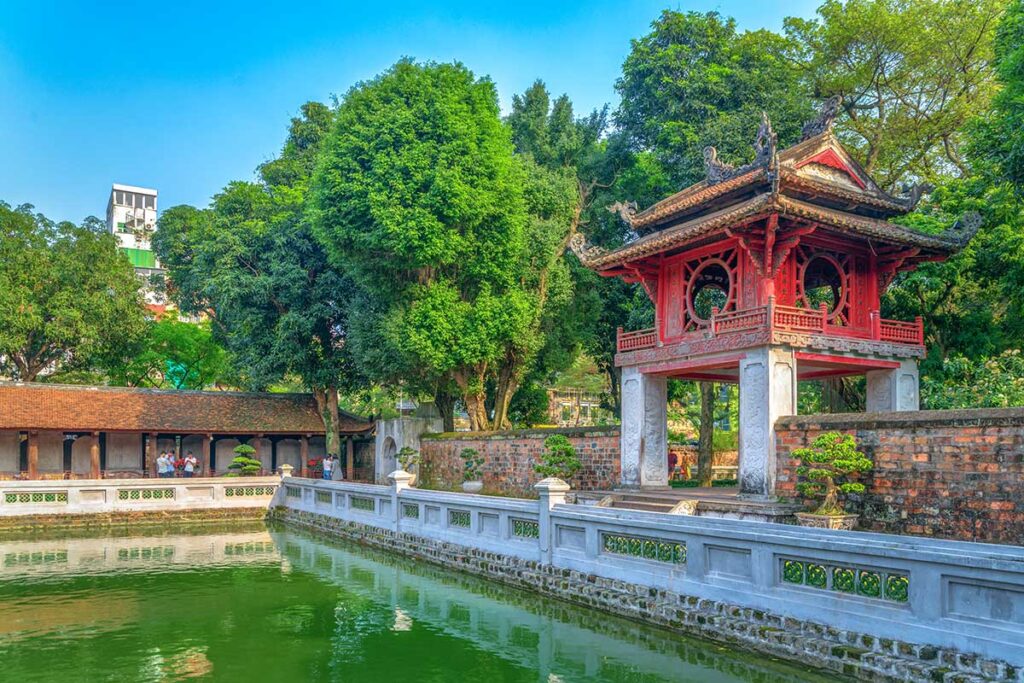
The name “Khue Van” translates to Pavilion of the Constellation of Literature, referring to a star associated with scholarly excellence in East Asian traditions. This meaning connects the pavilion with Vietnam’s Confucian ideals of knowledge, moral values, and the pursuit of learning.
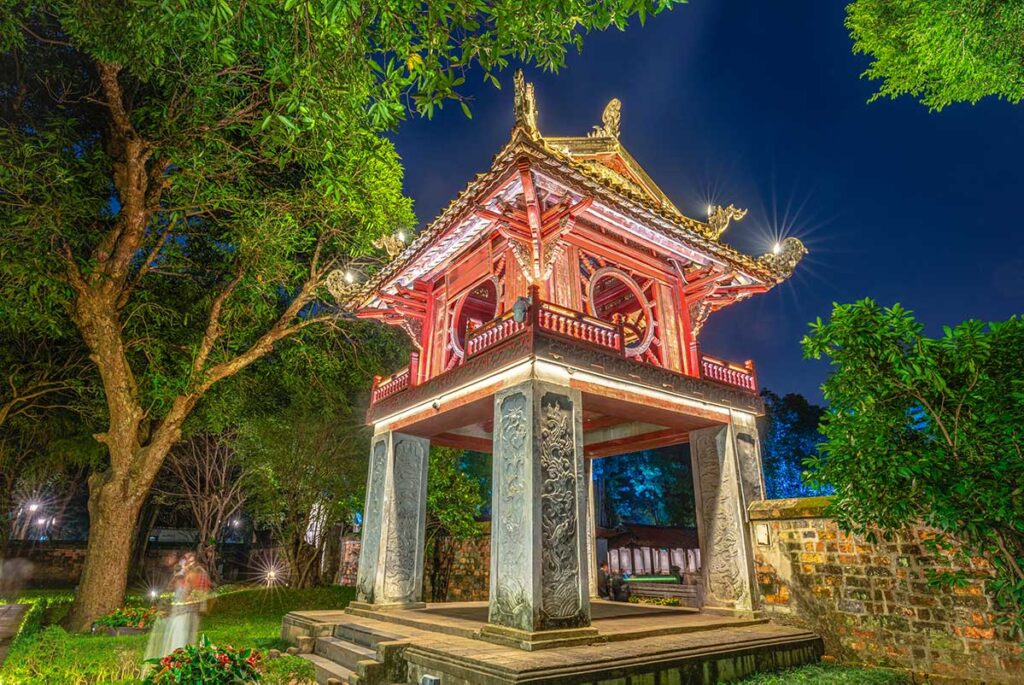
Today, Khue Van Pavilion is instantly recognizable—it appears on Hanoi’s city emblem and is featured on the 100,000 VND banknote. Despite its modest size, the pavilion carries a cultural weight far greater than its structure, embodying both the history of the Temple of Literature and the enduring value of education in Vietnamese society.
History of Khue Van Pavilion
Khue Van Pavilion was built in 1805 during the Nguyen Dynasty, under the reign of Emperor Gia Long. Its purpose was not administrative but cultural—serving as a place where scholars could gather, read poetry, and discuss literature, reinforcing its role as a symbol of knowledge and enlightenment.
Although the pavilion itself is relatively young compared to the Temple of Literature, which was founded in 1070 as Vietnam’s first national university, it quickly became one of the complex’s most distinctive features. Standing between the outer courtyards and the inner sanctuaries, it symbolized the transition into a space dedicated to education and Confucian values.
Over time, its elegant design and symbolic meaning elevated its status beyond the temple grounds. In 1997, Khue Van Pavilion was officially chosen as the emblem of Hanoi, reflecting the city’s long-standing identity as a center of learning and culture.
Architecture and Symbolism
Khue Van Pavilion is a fine example of traditional Vietnamese architecture, combining elegance with layers of meaning. The structure stands on four square brick pillars, representing earth and stability, while the upper floor is built of lacquered red wood with a tiled roof that creates a graceful contrast of materials.
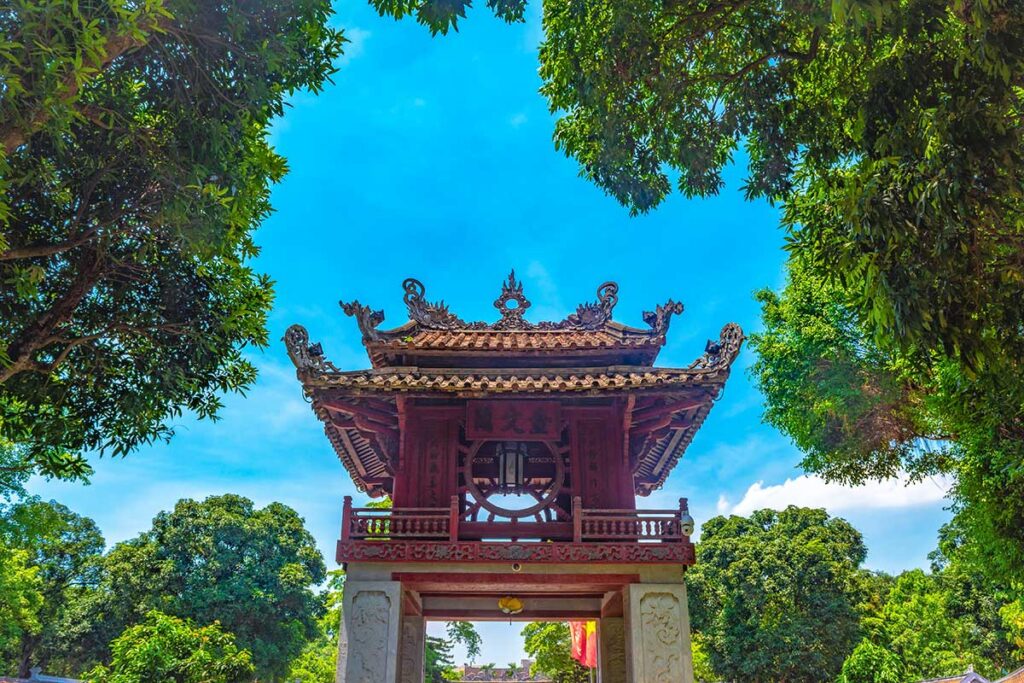
The most striking feature is the set of four circular windows, one on each side of the pavilion. These circles symbolize the sun or shining stars, a metaphor for enlightenment and the guiding light of knowledge. Above, the double-layered roof with gently upturned corners adds to the harmony of the design, suggesting openness and aspiration.
Decorative details reinforce its scholarly role: Chinese character couplets carved into the structure highlight the importance of learning and virtue in Confucian thought. The balance between the square pillars (earth) and the round windows (heaven) expresses the traditional yin–yang harmony, reminding visitors of the link between human knowledge and cosmic order.
Beyond its symbolism, the pavilion is also visually captivating. Sunlight streaming through the round windows creates a natural play of light and shadow, making it a favorite spot for photography and one of the most recognizable images of Hanoi.
On the 100,000 VND Banknote
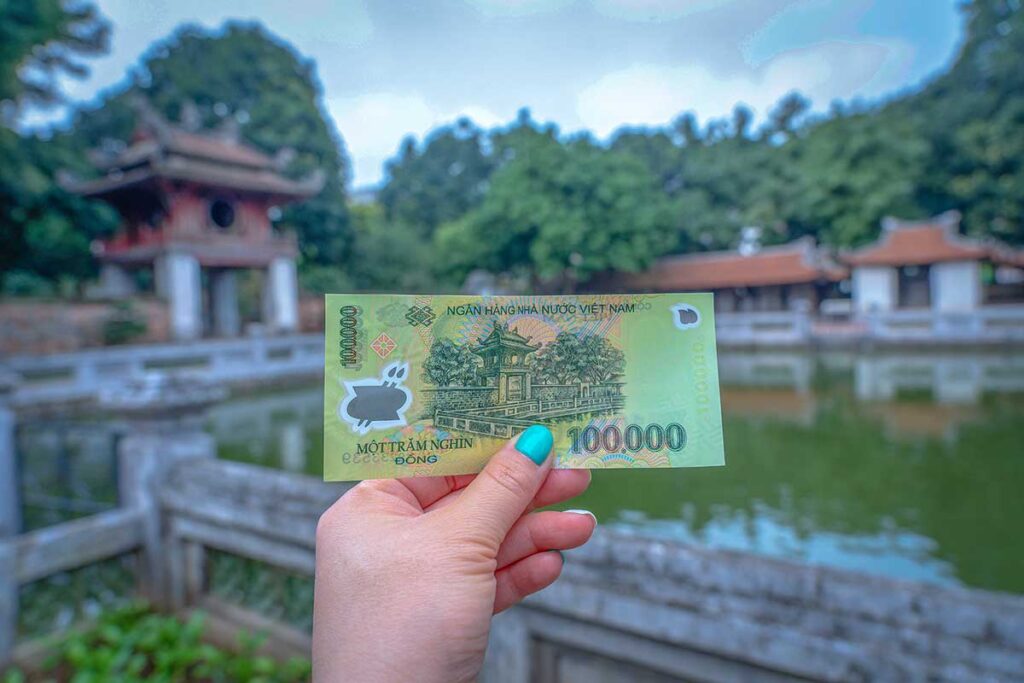
Khue Van Pavilion is featured on the reverse side of Vietnam’s green 100,000 VND banknote, making it one of the most widely seen cultural images in the country. Its distinctive design—four brick pillars, red wooden pavilion, and round windows—was chosen because it is instantly recognizable and strongly tied to Hanoi’s identity as a center of learning.
By placing the pavilion on the banknote, Vietnam highlighted not just a landmark, but the national value of education and culture. For many visitors, spotting the Temple of Literature’s emblem on everyday currency adds a sense of familiarity before they even step foot inside the site, reinforcing the pavilion’s role as a beloved and enduring symbol of knowledge.
Visiting Khue Van Pavilion at the Temple of Literature
What is the Temple of Literature?
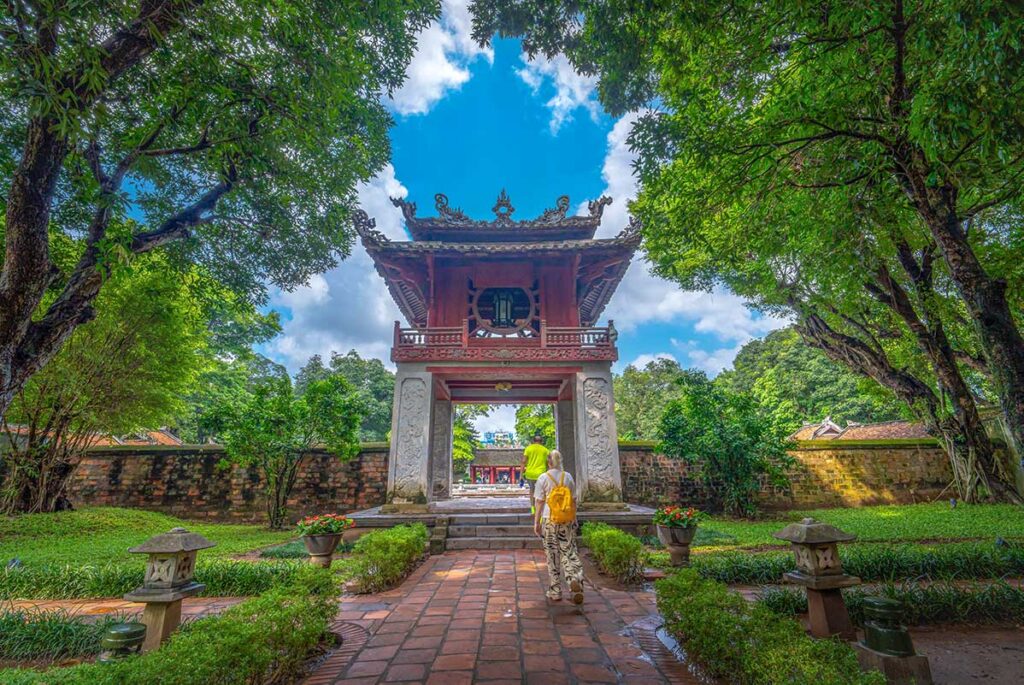
The Temple of Literature (Văn Miếu – Quốc Tử Giám) was founded in 1070 and later became Vietnam’s first national university, dedicated to Confucius and the cultivation of learning. The complex is arranged around five courtyards, each with its own function, from tranquil gardens to study halls. Within these courtyards are pavilions, gateways, and the famous stelae honoring Vietnam’s scholars.
Highlights of the Temple of Literature
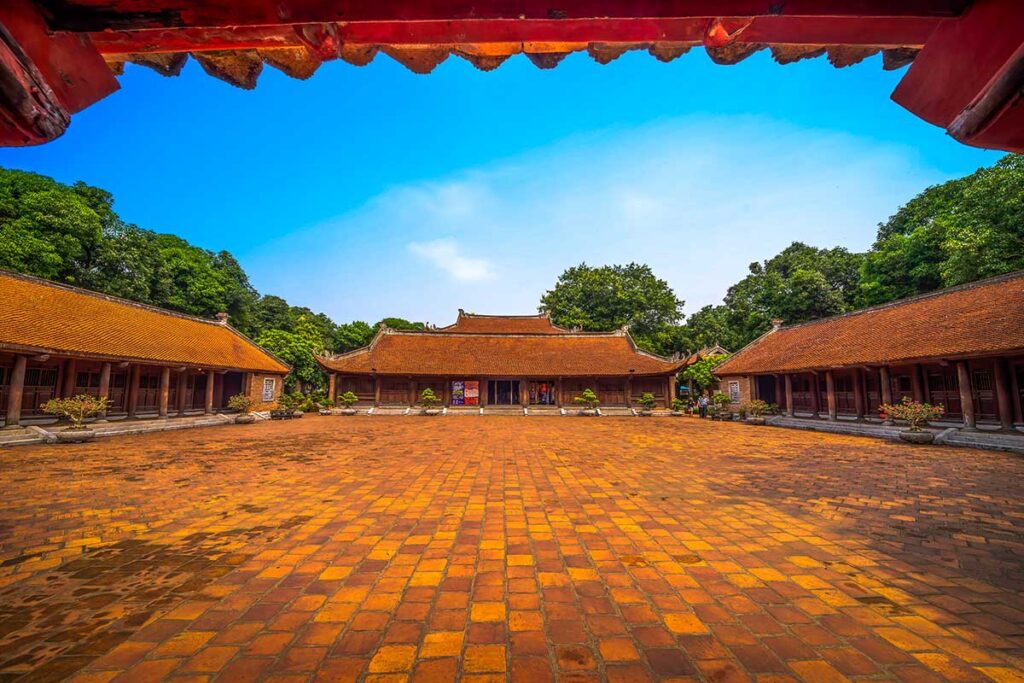
- Stelae of Doctors – Stone tablets listing the names of those who passed royal exams between the 15th and 18th centuries, now recognized by UNESCO.
- Thien Quang Well – A large square pond symbolizing the earth, lying directly in front of Khue Van Pavilion.
- Courtyards and gates – Each courtyard has a symbolic gate marking the progression toward knowledge.
- Confucius altar – Located in the final courtyard, where students and visitors still pay their respects today.
For more, see our full Temple of Literature guide.
Visiting information
- Opening hours: Daily from 8:00–17:00. Best visited in the early morning when it’s quiet and less crowded.
- Address and location: 58 Quoc Tu Giam Street, Dong Da District. About 15–20 minutes on foot or a short taxi/Grab ride from Hanoi’s Old Quarter.
- Entrance fee: 70,000 VND per person (children often pay a reduced price).
- Tips: The courtyards can get busy, so plan for an early or late-day visit if you want photos without crowds. The audio guide or onsite displays are worth it for extra context. Many visitors also enjoy the calm gardens, making it a pleasant stop even if you’re not deeply into history.
Nearby sights to combine with
The Temple of Literature is located in Ba Dinh, an area packed with historic landmarks that are easy to combine into a short walking tour. Within about a kilometer you can reach:
- Hanoi Flag Tower (800 m) – A 19th-century military landmark that now stands at the entrance of the Vietnam Military History Museum.
- Imperial Citadel of Thang Long (1 km) – A UNESCO World Heritage Site and former seat of Vietnamese emperors, with ancient gates, archaeological remains, and wartime command bunkers.
- Ho Chi Minh Mausoleum and One Pillar Pagoda (~1.2 km) – The solemn resting place of Vietnam’s founding father, next to one of Hanoi’s most unique Buddhist temples.
- Hanoi Train Street – If you’re walking from the Old Quarter, you’ll pass the famous railway street where houses sit just a meter from the tracks, a fascinating contrast with the scholarly calm of the Temple of Literature.
These sights make it easy to plan a half-day itinerary around Khue Van Pavilion while exploring some of Hanoi’s most iconic landmarks.
